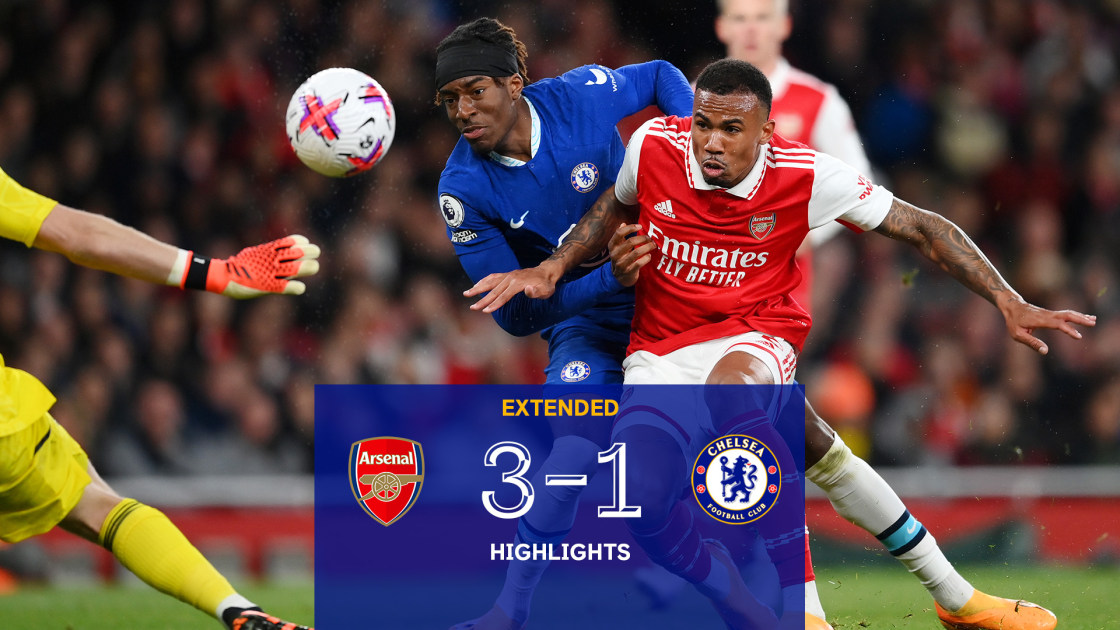
Football Analytics Influencers Explained: The Architects of the Modern Game’s Understanding
Football, the world’s most beloved sport, has always been a game of passion, skill, and unpredictable drama. For decades, its nuances were primarily understood through the "eye test" – the subjective observations of pundits, coaches, and fans. However, in the 21st century, a quiet revolution has taken root, driven by data and statistical analysis. This revolution has not only reshaped how clubs operate but also how fans perceive and discuss the game. At the forefront of this seismic shift are the football analytics influencers – a diverse group of individuals who translate complex data into digestible insights, democratizing knowledge and challenging long-held beliefs.
These influencers are more than just number crunchers; they are storytellers, educators, and often, provocateurs, who use data to illuminate hidden truths, predict future trends, and debunk popular myths. Their rise reflects a broader cultural embrace of data-driven decision-making, moving football beyond mere anecdote and into an era of informed understanding.
The Genesis of Analytics in Football
The concept of using data to gain a competitive edge isn’t new. Major League Baseball’s "Moneyball" era, popularized by Billy Beane and the Oakland Athletics, showcased the power of sabermetrics in player recruitment. While football was slower to adopt, the late 2000s and early 2010s saw a gradual shift. Companies like Opta and Wyscout began collecting vast amounts of event data – every pass, tackle, shot, and touch – turning the chaotic beauty of a match into structured datasets.
Initially, this data was primarily the domain of professional clubs and a few pioneering researchers. But as more data became available and analytical tools became more accessible, a new breed of independent analysts emerged. They started sharing their findings on blogs, forums, and eventually, social media, building a following by offering fresh perspectives that often contradicted conventional wisdom. These early adopters laid the groundwork for today’s diverse landscape of football analytics influencers.
Who Are These Influencers? Categorization and Key Players
The football analytics landscape is rich and varied, with influencers specializing in different areas and reaching different audiences. We can broadly categorize them into several groups:
1. The Data Scientists & Researchers: Building the Foundation
These are the individuals who often create the metrics, develop the models, and perform the deep dives that push the boundaries of football understanding. They are adept at programming languages like R and Python, statistical modeling, and data visualization.
-
Ted Knutson (StatsBomb): Perhaps the most prominent figure in this space, Ted Knutson is the founder of StatsBomb, a company that revolutionized football data by providing more granular and accurate event data than previously available. StatsBomb’s open-source data initiatives and innovative metrics like "pressure events" and "defensive actions" have empowered countless analysts. Knutson himself is a prolific writer and speaker, known for his sharp insights and willingness to challenge the status quo, often using data to dissect transfer market inefficiencies or tactical trends. His influence extends from professional clubs (many of whom license StatsBomb data) to independent analysts who learn from his methodologies.
-
Sam Gregory, Omar Chaudhuri (21st Club): While working for a consultancy, these individuals contribute significantly to the academic and practical application of football analytics. They often publish research papers and insights on topics like squad valuation, tactical efficiency, and player development, influencing clubs at a strategic level.
-
Independent Researchers/Academics: Many academics and independent researchers, often with backgrounds in statistics, physics, or computer science, publish groundbreaking work on platforms like ResearchGate or personal blogs. While not always "influencers" in the social media sense, their foundational research often forms the basis for the insights shared by others. They might develop new xG models, analyze movement patterns, or explore the impact of specific tactical setups.
2. The Journalists & Media Personalities: Bridging the Gap
This group excels at translating complex analytical concepts into engaging narratives for a broader audience. They combine traditional journalistic skills with a deep understanding of data, making analytics accessible to casual fans and industry professionals alike.
-
Michael Cox (The Athletic): Renowned for his tactical analysis, Cox seamlessly weaves statistical insights into his articles. He uses data not as a standalone element, but as a tool to explain why certain tactical approaches work or how players contribute beyond mere goals and assists. His work has helped popularize concepts like pressing schemes, half-space exploitation, and various defensive structures among a mainstream audience.
-
Rory Smith (The New York Times): While a general football correspondent, Smith frequently incorporates analytical perspectives into his reporting, especially when discussing transfer market trends or the evolution of playing styles. He represents the growing acceptance of analytics within traditional sports journalism.
-
Gabriele Marcotti (ESPN/The Times): A highly respected journalist, Marcotti often leverages data to provide depth to his analysis of European football, particularly regarding financial fair play, transfer sagas, and club management. He demonstrates how data informs broader strategic discussions in the sport.
3. The Content Creators & Educators: Democratizing Knowledge
This category includes individuals who primarily use social media (especially Twitter), podcasts, and YouTube channels to share insights, teach analytical techniques, and foster community among data enthusiasts. They are crucial for democratizing access to analytical thinking.
-
Various Twitter Accounts: Twitter has become a hotbed for football analytics. Accounts like @_ExpectedChelsea, @MC_of_A, @mixedknuts (Ted Knutson’s personal account), @OptaJoe, and countless others share daily statistical tidbits, visualizations, and in-depth threads. They engage directly with fans, answer questions, and debate interpretations, making analytics a dynamic, interactive conversation.
-
Podcast Hosts: Podcasts like "The StatsBomb Podcast," "The Athletic’s Tactics Podcast," and various club-specific analytics podcasts break down matches and trends in an auditory format, often featuring interviews with leading analysts and club professionals.
-
YouTube Channels: Channels dedicated to explaining tactical concepts or player analysis often use data visualizations to illustrate their points, making complex ideas easier to grasp for visual learners.
4. The Club Analysts & Scouts (with a Public Profile): Applying the Science
While many club analysts work behind the scenes, a few individuals or departments within clubs have gained a public profile, either through their previous independent work or through their club’s transparency initiatives. They represent the practical application of analytics at the highest level.
- Brentford FC / Midtjylland Model: These clubs are often cited as pioneers in data-driven recruitment and decision-making, influencing many others to follow suit. While specific individuals might not be "influencers" in the public sense, the success of their analytical departments makes their methodologies highly influential. Matthew Benham (owner of both clubs) is a key figure here, as his philosophy underpins their data-first approach.
The Tools and Methodologies They Employ
These influencers utilize a range of tools and methodologies to unearth their insights:
- Data Providers: Opta, Wyscout, StatsBomb, and now increasingly bespoke club data.
- Programming Languages: Python (with libraries like Pandas, NumPy, Matplotlib, Seaborn) and R (with Tidyverse) are essential for data manipulation, analysis, and visualization.
- Visualization Tools: Tableau, Power BI, or custom-coded visualizations help present data in an understandable and visually appealing manner.
- Key Metrics: They frequently work with metrics like:
- Expected Goals (xG): The probability that a shot will result in a goal, based on various factors.
- Expected Assists (xA): The probability that a pass will result in a goal assist.
- Progressive Passes/Carries: Metrics that quantify how much a player moves the ball towards the opponent’s goal.
- PPDA (Passes Per Defensive Action): A measure of pressing intensity.
- Possession Value/Chains: More advanced metrics that attribute value to each pass or action in a possession sequence.
- Defensive Action Locations: Analyzing where and how defensive actions occur to understand pressing traps or defensive structures.
Their Impact and Influence
The impact of football analytics influencers is profound and multifaceted:
- Democratization of Knowledge: They have made complex analytical concepts accessible to a broad audience, allowing fans to engage with the game on a deeper, more informed level. This has shifted discussions from purely subjective opinions to evidence-based arguments.
- Shaping Public Discourse: Their insights frequently become talking points in mainstream media, influencing how pundits and commentators discuss tactical trends, player performance, and transfer market value.
- Informing Professional Decisions: While many work independently, their methodologies and findings often influence professional clubs in areas such as:
- Recruitment: Identifying undervalued players or assessing a player’s true contribution beyond traditional stats.
- Tactical Planning: Understanding opponent weaknesses, optimizing team formations, and analyzing game states.
- Player Development: Pinpointing areas for individual improvement.
- Challenging Conventional Wisdom: They have consistently debunked myths (e.g., "goals win games" being the only measure of striker value, or "possession for possession’s sake") and highlighted the importance of underlying performance over mere results.
- Enhancing the Fan Experience: For many, understanding the "why" behind what happens on the pitch adds another layer of enjoyment to watching football. Analytics provides a richer narrative.
Challenges and Criticisms
Despite their growing influence, football analytics and its purveyors face challenges:
- "Eye Test" vs. Data: A persistent debate revolves around the perceived conflict between subjective observation and objective data. Influencers often need to balance the two, acknowledging that football is played by humans and not just numbers.
- Context is King: Data without context can be misleading. Influencers must ensure their analysis considers game state, opponent quality, player roles, and other qualitative factors.
- Over-Reliance: The danger of reducing players to mere statistical profiles or making decisions solely based on numbers, ignoring the human element, team chemistry, or psychological factors.
- Misinterpretation and Oversimplification: Complex analytical concepts can be easily misunderstood or oversimplified when disseminated widely, leading to erroneous conclusions.
The Future of Football Analytics Influencers
The field of football analytics is still evolving rapidly, and so too will the role of its influencers.
- AI and Machine Learning: Advanced AI models will likely generate even deeper insights, identifying patterns too complex for human observation. Influencers will play a role in interpreting and explaining these AI-driven findings.
- Real-time Analytics: As technology advances, real-time analytics for in-game decision-making will become more sophisticated. Influencers might shift towards analyzing live data streams and explaining their implications.
- Increased Integration: Expect to see more former independent analysts moving into roles within professional clubs, blurring the lines between external influence and internal application.
- Personalized Analytics: As data collection becomes more granular (e.g., through wearable tech), personalized player analytics and fitness insights could become a new frontier for influencers to explore.
In conclusion, football analytics influencers are indispensable figures in the modern game. They have transformed how we understand, discuss, and appreciate football, elevating the discourse from mere opinion to informed insight. By translating complex data into compelling narratives, they have not only empowered fans but also pushed professional clubs towards a more data-driven future. As the game continues to evolve, these architects of understanding will undoubtedly remain at the forefront, guiding us through the intricate beauty of football, one data point at a time.


